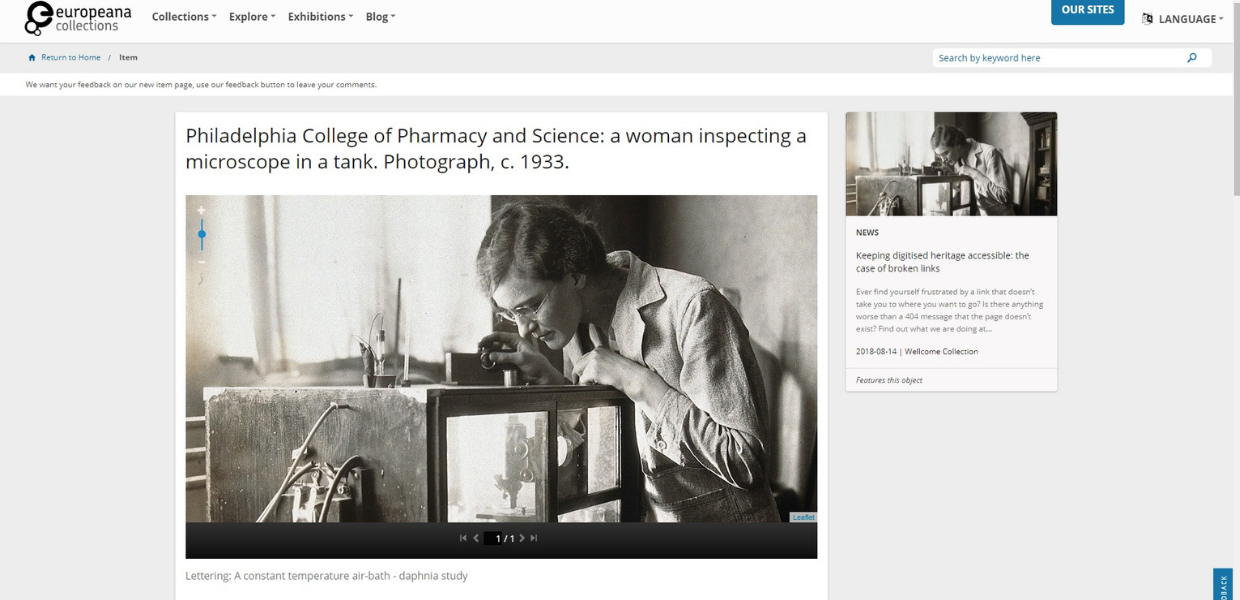Making it easier to search and browse collections online
Discovering inspiring content in Europeana Collections with or without a specific search should be quick and easy. A range of developments over the last year is helping to deliver a better online experience.

- Title:
- Screenshot of the new item page on Europeana Collections
- Creator:
- Europeana Foundation
- Date:
- 2019
- Institution:
- Europeana Foundation
- Country:
- The Netherlands
- Copyright:
- CC BY-SA
Two-thirds of traffic to Europeana Collections comes from Google. Improvements were made this year on search engine optimisation and a new site map to make more pages discoverable by a Google search, so that more people find Europeana Collections material when they’re searching for culture online.
Being able to find a single interesting item on Europeana Collections is good, but being able to see a range of items and related information on one screen is even better. Europeana Collections’ ‘Entity’ pages provide this function. They are landing pages or entry points to content by a specific person, or on a certain topic, like Mozart, photographs or Art Deco. They provide context by combining information from Wikipedia with results relating to a person or topic. Items connected to an entity have the added benefit of taking the multilingual search terms associated with that entity, so they will turn up in searches performed in different languages.
The detail or ‘item’ page on Europeana Collections has been redesigned to make sharing, downloading and crediting an item simpler, and now includes ‘next’ and ‘previous’ options to make moving through search results easier. The page also shows where the item has been used before - if it’s in a blog post, gallery, exhibition or entity - so it’s easy to find more context and related items.
Some types of material require special functionality. In 2018-9, Europeana Newspapers was released as a thematic collection gathering over 4 million newspapers from 23 countries. More than 800,000 of those newspaper issues are available in OCR’ed full-text, meaning they are fully searchable and readable in text format. Developing this new functionality meant facing a lot of data, technical and coordination challenges, but the developments and changes to the infrastructure, APIs, on-screen display and filters benefit not just the Newspapers collection, but the entire platform.
Together, these developments take us closer to our goal of increasing visitor numbers, repeat visits and session length through more engaging experiences and in-depth browsing.

